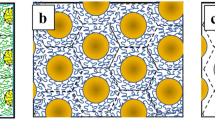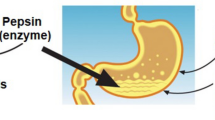Abstract
Novel amphiphilic brush copolymers, P(CPLAMA)-co-P(PEGMA), of cholesteryl poly(l-lactic acid) (CPLA) and poly(ethylene glycol) monomethyl ether (PEG) with determined hydrophobic/hydrophilic ratios were synthesized by the methacrylate (MA) macromonomer copolymerization method. Brush copolymers were prepared via both free radical polymerization (FRP) and atom transfer radical polymerization (ATRP). The copolymer compositions were determined by 1H NMR spectroscopy. The synthesized copolymers were used to prepare the micellar nanoparticles with hydrophobic CPLA and hydrophilic PEG forming the core and shell, respectively. The critical micelle concentration (CMC) values of the samples produced by FRP (brush copolymer 1) and ATRP (brush copolymer 2) were estimated to be approximately 0.9 and 0.7 mg/L in aqueous solution by a fluorescence probe technique, respectively. The transmission electron microscopy (TEM) images of micelles of the brush copolymers 1 and 2 showed that micelles were spherical in shape with a mean diameter of 111 and 32 nm, respectively. The results showed that the size of micelles became larger with the increase of the molecular weight of polymer and the relative content of the hydrophilic PEG as well. The drug loading efficiency and drug-releasing properties of the micelles were investigated by using naproxen as a hydrophobic model drug. The in vitro release of naproxen-loaded micelles with about 85–89 % loading efficiency and 17–18 % loading capacity was studied by a using dialysis method in phosphate-buffered solution at 37 °C. The drug-releasing characteristics exhibited a phase of slow release. On the basis of the results obtained, the proposed brush copolymers may be useful in various targeted drug delivery applications, especially those involving hydrophobic drugs.








Similar content being viewed by others
References
Vlerken LEV, Amiji MM (2006) Multi-functional polymeric nanoparticles for tumour-targeted drug delivery. Drug Deliv 3:205–216
Rajesh S, James WL Jr (2009) Nanoparticle-based targeted drug delivery. Exp Mol Pathol 86:215–223
Li X, Yang Z, Yang K, Zhou Y, Chen X, Zhang Y, Wang F, Liu Y, Ren L (2009) Self-assembled polymeric micellar nanoparticles as nanocarriers for poorly soluble anticancer drug ethaselen. Nanoscale Res Lett 4:1502–1511
Zhang YH, Li XR, Zhou YX, Wang XN, Fan YT, Huang YQ, Yan L (2010) Preparation and evaluation of poly(ethylene glycol)-poly(lactide) micelles as nanocarriers for oral delivery of cyclosporine A. Nanoscale Res Lett 5:917–925
Bagheri M, Shateri S (2012) Thermosensitive nanosized micelles from cholesteryl-modified hydroxypropyl cellulose as a novel carrier of hydrophobic drugs. Iran Polym J 21:365–373
Pierri E, Avgoustakis K (2005) Poly(lactide)-poly(ethylene glycol) micelles as a carrier for griseofulvin. J Biomed Mater Res A 75:639–647
Barreiro-Iglesias R, Bromberg L, Temchenko M, Hatton TA, Concheiro A, Alvarez-Lorenzo C (2004) Solubilization and stabilization of camptothecin in micellar solutions of pluronic-g-poly(acrylic acid) copolymers. J Control Release 97:537–549
Sudhina G, Bishnu PB, Kenichi N (2010) Schizophrenic micellization of poly(ethylene oxide-b-methacrylic acid) induced by phosphate and calcium ions. J Colloid Interface Sci 350:63–68
Lee ES, Shin HJ, Na K, Bae YH (2003) Poly(L-histidine)–PEG block copolymer micelles and pH-induced destabilization. J Control Release 90:363–374
Li PZ, Li XR, Zhou HX, Zhang YH, Wang F, Liu Y (2009) Prediction method for the compatibility between drug and its carrier. Chin J New Drug 18:262
Zhou J, Wang L, Yang Q, Liu Q, Yu H, Zhao Z (2007) Novel thermoresponsive and pH-responsive aggregates from self-assembly of triblock copolymer PSMA-b-PNIPAAm-b-PSMA. J Phys Chem B 111:5573–5580
Xu J, Luo S, Shi W, Liu S (2006) Two-stage collapse of unimolecular micelles with double thermoresponsive coronas. Langmuir 22:989–997
Rachel KO, Craig JH, Karen LW (2006) Cross-linked block copolymer micelles: functional nanostructures of great potential and versatility. Chem Soc Rev 35:1068–1083
Xu P, Tang H, Li S, Ren J, Kirk EV, Murdoch WJ, Radosz M, Shen Y (2010) Enhanced stability of core-surface cross-linked micelles fabricated from amphiphilic brush copolymers. Eur Polym J 46:1288–1298
Lecommandoux S, Checot F, Borsali R, Schappacher M, Deffieux A, Brulet A, Cotton J (2002) Temperature dependence of the conformation of a comblike liquid crystalline polymer in a NI nematic phase. Macromolecules 35:8878–8881
Ishizu K, Satoh J, Tsubaki K (2001) Aggregation behavior of proto-type amphiphilic copolymer brushes in aqueous solution. J Mater Sci Lett 20:2253–2256
Matyjaszewski K (2012) Atom transfer radical polymerization (ATRP): current status and future perspectives. Macromolecules 45:4015–4039
Tsarevsky NV, Matyjaszewski K (2007) “Green” atom transfer radical polymerization: from process design to preparation of well-defined environmentally friendly polymeric materials. Chem Rev 107:2270–2299
Xu P, Tang H, Li S, Ren J, Kirk E, Murdoch W, Radosz M, Shen Y (2004) Enhanced stability of core-surface cross-linked micelles fabricated from amphiphilic brush copolymers. Biomacromolecules 5:1736–1744
Tan BH, Hussain H, Liu Y, He CB, Davis TP (2010) Synthesis and self-assembly of brush-type poly[poly(ethylene glycol)methyl ether methacrylate]-block-poly(pentafluorostyrene) amphiphilic diblock copolymers in aqueous solution. Langmuir 26:2361–2368
Lewis DH (1990) In: Chasin N, Langer R (eds) Biodegradable polymers as drug delivery systems. Dekker, New York
Mert O, Doganci E, Erbil H, Demir A (2008) Surface characterization of poly(L-lactic acid)-methoxy poly(ethylene glycol) diblock copolymers by static and dynamic contact angle measurements, FTIR, and ATR-FTIR. Langmuir 24:749–757
Spinu M, Jackson C, Keating M, Gardner K (1996) Processing technologies for poly(lactic acid). J Macromol Sci Pure Appl Chem 33:1497
Lee JH, Kopeckova P, Zhang J, Kopecek J, Andrade JD (1988) Protein resistance of poly(ethylene oxide) surfaces. Polym Mater Sci Eng 59:234–238
Alisar SZ, Melgardt V, Michael VP (2005) Encapsulation of drug nanoparticles in self-assembled macromolecular nanoshells. Langmuir 21:403–410
Bagheri M, Motirasoul F (2013) Synthesis, characterization and micellization of cholesteryl-modified amphiphilic poly(L-lactide)-block-poly(glycidyl methacrylate) as a nanocarrier for hydrophobic drugs. J Polym Res 20:59. doi:10.1007/s10965-012-0059-3
Bagheri M, Bigdeli E, Pourmoazzen Zh (2012) Self-assembled micellar nanoparticles of a novel amphiphilic cholesteryl-poly(L-lactic acid)-block-poly(poly(ethylene glycol) methacrylate) block-brush copolymer. Iran Polym J (in press)
Bagheri M, Motirasoul F (2012) Synthesis and characterization of an amphiphilic methoxy poly(l-lactide)-block-poly(glycidylmethacrylate) copolymer as a drug nanocarrier. e-Polymers 087
Liu M, Fu Z, Wang Q, Xu J, Fan Z (2008) Study of amphiphilic poly(1-dodecene-co-para-methylstyrene)-graft-poly(ethylene glycol). Part II: Preparation and micellization behavior of the amphiphilic copolymers. Eur Polym J 44:4122–4128
Wang D, Xiuying H, Zhu L, Liu J, Qiu F, Yan D, Zhu X (2012) Salt/pH dual-responsive supramolecular brush copolymer micelles with molecular recognition of nucleobases for drug delivery. RSC Adv 2:11953–11962
Luo Y-L, Zhang L-L, Xu F (2012) Synthesis, micellization and caffeine drug release kinetics of novel PBMA-b-PNIPAAm block polymer brushes. Chem Eng J 189–190:431–442
Zhang L, Hu Y, Jiang X, Yang C, Lu W, Yang Y (2004) Camptothecin derivative-loaded poly(caprolactone-co-lactide)-b-PEG-b-poly(caprolactone-co-lactide) nanoparticles and their biodistribution in mice. J Control Release 96:135–148
Hu Y, Xie J, Tong YW, Wang CH (2007) Effect of PEG conformation and particle size on the cellular uptake efficiency of nanoparticles with the HepG2 cells. J Control Release 118:7–17
Acknowledgments
The authors would like to thank the Vice Chancellor of Research of Azarbaijan Shahid Madani University for financially supporting this research. The authors’ warm thanks are also extended to Dr. H. Abdolmohammad zadeh and Mr Rahim Mohammad Rezaee for their useful help.
Author information
Authors and Affiliations
Corresponding author
Rights and permissions
About this article
Cite this article
Bagheri, M., Bigdeli, E. Preparation of stealth micellar nanoparticles of novel biodegradable and biocompatible brush copolymers with cholesteryl-modified PLA and PEG side chains. J Polym Res 20, 84 (2013). https://doi.org/10.1007/s10965-013-0084-x
Received:
Accepted:
Published:
DOI: https://doi.org/10.1007/s10965-013-0084-x




